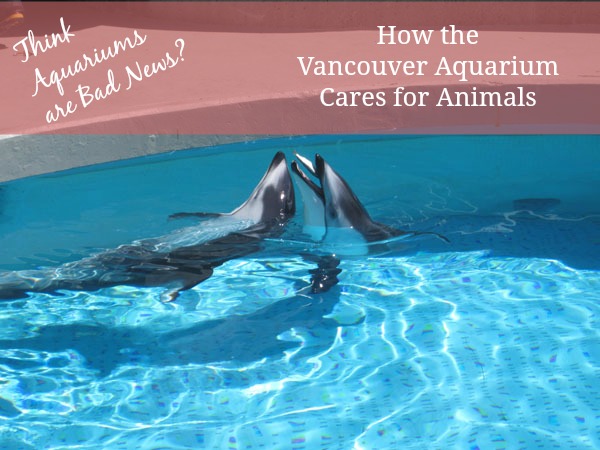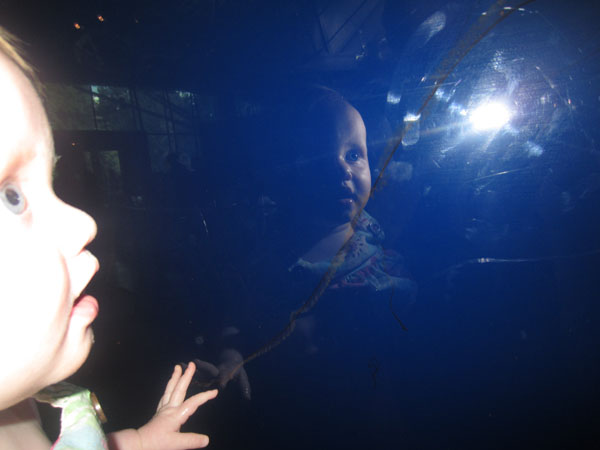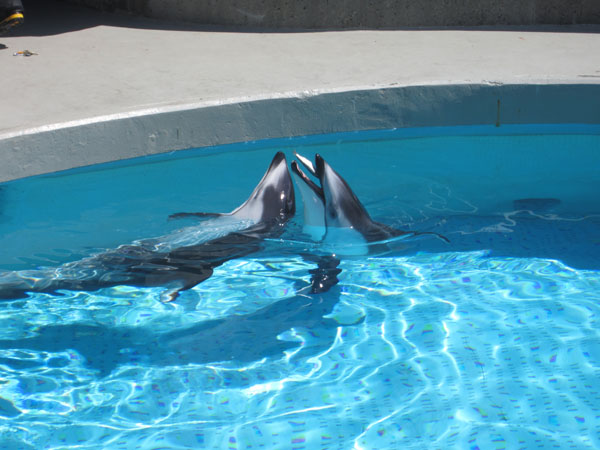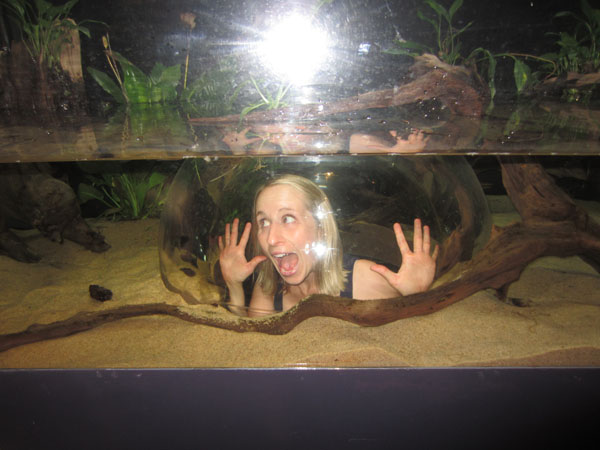
With grandparents living in Vancouver, I spent many childhood summers surrounded by the ocean and some of my fondest memories as a child are at the Vancouver Aquarium. Yet I hesitated about taking my two daughters there for the first time this summer. Driven by the full-out ugly cry watching the heartbreaking documentary, “Blackfish” and the recent backlash at Sea World over its treatment of animals, I was worried that by visiting an aquarium I was supporting the mistreatment of animals. Ultimately we chose to go and were pleasantly surprised at what we learned.
We had the privilege of a behind-the-scenes tour with Linda Nishida, a Communications Advisor at the Aquarium, and even before we walked into the first exhibit, I could tell that all of my concerns about the Aquarium were completely unfounded. I learned more that day than I have on any field trip (and that’s saying a lot…I’ve been on many as both a student and teacher!) and even my husband, who detests any attraction not devoted wholly to sports, felt that the Aquarium was an eye-opening and valuable teaching opportunity for us as well as our children.

There are 50,000 animals living at the Vancouver Aquarium, and many have stories that would just melt your heart. The goal of the Aquarium is to enhance and protect our world and our oceans. The Aquarium is devoted to improving the lives of marine animals with the ultimate goal of helping animals live and thrive in the wild. It surprised me to learn that most animals treated by the Animal Rescue Team are returned to the wild. My concerns about animals in captivity were quickly put to rest when I learned that the Vancouver Aquarium does everything in its power, including surgeries, rehabilitation, and behaviour training, to get any injured or sick animal back into the ocean as quickly as possible. Unfortunately, there are some animals whose injuries are so severe that they would never survive in the wild; they are the “non-releasables” and these animals would simply die without the Vancouver Aquarium sheltering them or finding homes for them at other locations that meet their high standards of care.
The ones whose stories will stick with me the most are the larger rescued animals; these animals have all been deemed “non-releasable” by various government organizations, and therefore, the only reason they are alive today is because of captivity. There’s Walter, a blind sea otter who was rescued off Tofino’s shoreline; adorable Walter had unbelievably been shot and left for dead. The Aquarium’s Rescue Centre is the reason he is alive today: eleven weeks and numerous surgeries later, Walter is a happy otter who entertained my youngest daughter by swimming up close to the glass and splashing on his back. Walter’s life was saved by the Vancouver Aquarium, but his blindness means that he would not survive in the ocean. At the Aquarium, he has a life that he would never otherwise have and after watching him for a few moments, it is clear that the happiness he exudes while swimming is contagious: every person watching him, young and old, were smiling and cheering him on. Even after bumping into a rock, a natural consequence of being a blind otter, Walter shook it off and went on to entertain everyone with even more splashing and diving.

In addition to Walter, Helen and Hanna, the Aquarium’s two dolphins, were both given a chance at living a long and healthy life when the Aquarium took them in. Both Hanna and Helen had been deemed non-releasable by the Japanese government after suffering severe injuries when caught in fishing nets off Japan’s coast. Jack and Daisy, the two harbour porpoises, were also rescued and are the only ones of their kind in any North American aquarium. If not for their home at the Aquarium, they would not have survived. Jack alone was given a special porpoise life jacket as he was too weak and small to even swim. Volunteers fed him hour after hour, round the clock, and they are the reason he is alive today.
These stories are just the tip of the iceberg: the number of rescued animals living at the Aquarium is significant, and each one has a story that demonstrates the passion and empathy for animals that every Aquarium worker and volunteer has. Places like the Vancouver Aquarium do not hinder an animal’s life; rather, they allow that animal to have a life.
The stories we heard at the Aquarium that day will stay with me and my family for a long time. My five-year old daughter has not stopped talking about Walter the sea otter and how cool it was to sing “Baby Beluga” to the two belugas at the Aquarium. We saw four-eyed fish (who knew those existed outside of “The Simpsons”!), went into a bat cave (my 6’6” husband was terrified he was going to be attacked for invading their air space), learned about the impact our decisions are having on our Arctic (scary stuff!), and got to hold starfish…all in a few hours’ time.

The Vancouver Aquarium is not only one of the most enjoyable ways to spend a day with your family, it is also inspiring and educational. Children (and adults!) of all ages will be mesmerized by the jellyfish, will cheer on the humane animal talent shows, and will be emotionally impacted by the many amazing and heart wrenching stories of the animals the Aquarium has rescued over the years.
I am still going to ugly cry watching any animal documentary that shows cruelty of any form, and I still think there are some zoos and aquariums out there that do not have the animal’s best interests at heart, but I now realize that all of my reservations about visiting the Vancouver Aquarium were unfounded. My entire family learned so much, saw so many animals we would otherwise never be able to see, and laughed so much at all of the cute animal behaviours. Overall, the Vancouver Aquarium is not what I remember fondly from my childhood – it’s better.




